Guidance on grassland habitats
Grasslands cover around 40% of Oxfordshire, and form an important part of our county’s biodiverse landscape, providing benefits for wildlife and people alike.
Established grasslands such as hay meadows in the UK often support high levels of biodiversity, including rare or less common plants, fungi, farmland birds and invertebrates. There are some plant species that occur almost exclusively in unimproved grasslands, including;
• Devil's-Bit Scabious• Saw-Wort• Common Harebell• Horseshoe Vetch• Great Burnet• Betony• Chiltern Gentian• Green-Winged Orchid• Bee Orchid.
They also provide habitats for invertebrates to safely breed and shelter in, and allow safe travel across an increasingly urban landscape. Grassland road verges are importance habitat corridors for a wide range of native flora and fauna species. The form a key part of habitat mosaics, where scrub, freshwater habitats and woodland develop within and alongside each other, forming particularly valuable habitat for our native species.
Grasslands are often important foraging resources for pollinators - even improved grasslands with low species diversity will typically have species such as clover, buttercup and daisies for bees, wasps and other invertebrates to feed on. They also act as foraging habitat for larger species such as birds, badgers and hedgehogs.
What is unimproved grassland?
'Unimproved grassland' is a term that was originally used within the farming sector. it refers to grassland that has not had chemical fertilizer added to the land i.e. it has not been improved for agriculture. This means that unimproved grasslands are usually more biodiverse and better for wildlife than improved grassland.
.jpeg)
“Globally, studies have suggested that 2.3-7.3 billion tons of CO2 equivalents per year could be sequestered through grassland diversity restoration.” Plantlife
Grasslands not only have benefits for wildlife but also deliver additional benefits to people – these are ‘ecosystem services’. Grassland ecosystem services include;
• Agricultural food provision - improved (fertilised) grassland acts as a food source for our livestock
• Carbon sinks – UK grassland soils sequester on average 242 kg of carbon per hectare per year
• Recreation - Accessible grassland provides opportunities for sport and other recreational activities such as walking, cycling, running, picnicking, camping, boating, playing or just relaxing
• Flood protection – diverse grasslands in particular can reduce surface runoff and the extent of flooding through soil infiltration and physical slowing of water flow
• Erosion protection – grassland vegetation stabilises our soil against erosion and mass wastage by protecting the soil from the erosive power of rainfall and overland flow, trapping sediment, and binding soil particles together with roots
• Water quality regulation – grasslands allow polluted water infiltration into the ground, allowing nitrates and phosphates to be filtered out by the soil and preventing the pollution of watercourses
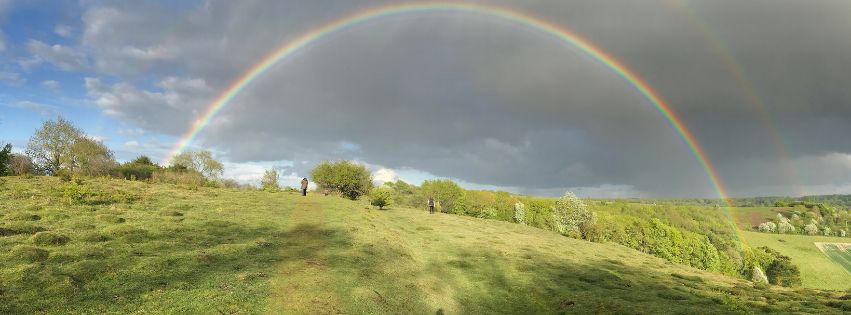
The protection and restoration of our grasslands is an important part of Nature's recovery. Staggeringly, we have lost a vast number of wildflower-rich grasslands across the UK, and as such, they have become one of the nation's rarest habitats.
“‘Wildflower meadows are one of the rarest habitats in the UK and we have lost 97% in 90 years.” The Royal Botanic Gardens, Kew
The 2023 State of Nature Report found that ‘vascular plant distributions have declined on average by 23% since the 1930s’. Included within this group, are plants adapted to low fertility conditions and low competition, such as those found within unimproved meadows.
However, many groups across the UK are taking action to restore grasslands. Scroll down to discover what's happening in Oxfordshire.
As well as being biodiversity ‘hotspots’ and having a fascinating history, many of Oxfordshire’s long established, or restored lowland meadows, are accessible to members of the public and wonderful places to visit at this time of year.
The historic floodplain meadows around Oxford include Oxford Meadows Special Area of Conservation (SAC), which is recognised as supporting vegetation communities which are ‘perhaps unique in the World’ in the selection criteria for designation and reflects the importance of continuing the traditional management that has been undertaken within these fields for centuries.
In Oxfordshire, there are various projects and initiatives working towards restoring and protecting grasslands. These include:
• The Big chalk project - various projects
• The Thames Valley Wildflower Meadow Project (Long Mead Wildlife Site)
• Floodplain Meadow Restoration Partnership - various projects
• The Evenlode Catchment Partnership - Floodplain restoration and biodiversity projects
• BBOWT - Chimney meadows floodplain restoration
• PlantLife - saving England's lowland Juniper across Oxfordshire and Wiltshire
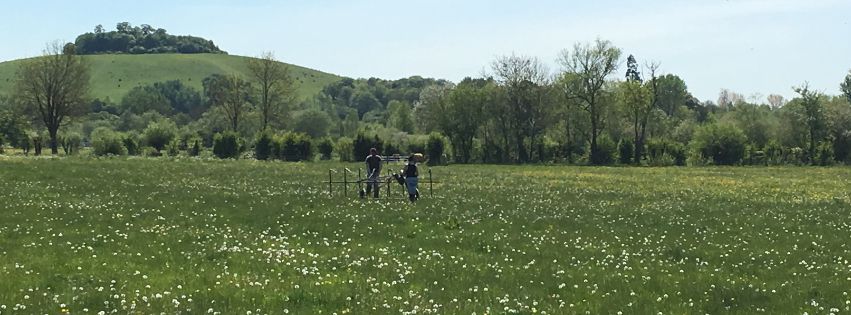
Meadows are types of grassland. The term ‘meadow’ refers to how the land was used. Traditionally, a meadow is a grassland habitat managed for haymaking or producing silage, just as a pasture is enclosed land that is grazed by livestock. However, in recent years the term ‘meadow’ is often used to describe grassland areas with wildflowers that are allowed to bloom.
%2520(1).jpeg)
Haymaking to feed livestock has been practised for centuries and this land management practice is recognisable as part of our social and cultural heritage. After the Norman Conquest, meadows had their own land category in the Doomsday Survey of 1086 (English Heritage).
Meadow flora is associated with poor soil as the management prevents high fertility. These species can easily be outcompeted by other plants, such as bramble and nettle, when the nutrient levels are higher.
We need both meadows and grasslands to sustain a mix of invertebrate species - It is not always appropriate to manage a grassland as a meadow. This depends on what species are present and the underlying soil conditions and geology. You can contact Wild Oxfordshire or look through the resources if you would like to know what may be best for your grassland.
We need both meadows and grasslands to sustain a mix of invertebrate species - It is not always appropriate to manage a grassland as a meadow. This depends on what species are present and the underlying soil conditions and geology. Check out the types of grassland page to see examples of the different grassland habitats and the species they support.
You can contact Wild Oxfordshire or look through the resources if you would like to know what may be best for your grassland.
%2520(3).jpeg)
Below is a brief summary of the different grassland habitats you can find across Oxfordshire. Some of the species you may find in each of these habitats are also listed under each heading. However, please note that the species listed aren't ones that you are absolutely guaranteed to see as many will depend on the conditions at the time, such as how wet the grassland is, or what the neighboring habitats are.
Indicator Species
Some of the plants listed under each grassland are indicator species for that habitat and are labelled as such. This means that the presence of these plants suggests that the area is a particular grassland type as they favour particular conditions e.g. oxeye daisy is an indicator of lowland meadow. However, many wildflowers are found across multiple types of unimproved grassland; i.e. many of the plant species that are found in unimproved, calcareous grassland also are found in dry, acidic grassland. You can find a list of plant indicator species and their associated grassland habitats in the appendix of PlantLife's 'Managing grassland verges: a best practise guide'.
.png)
Species you might see
In Oxfordshire we have some exceptional lowland meadows, many of which are designated and protected sites. These habitats are dependent on low fertility soils and traditional management methods. Neutral grasslands are flower rich, and are important for invertebrates and ground nesting birds such as the skylark. These grasslands are usually found on clay soils and are sensitive to changes in hydrology and nutrient status.
Types of neutral grassland in Oxfordshire include:
- Floodplain Meadows (can be managed as a hay meadow but the high-water content can change the species mix and botanical composition)
- Traditional hay meadows
- Scarce flood meadows, e.g. Oxford Meadows SAC and Long Mead Meadow at Eynsham.
The British National Vegetation Classification (NVC) is a system of classifying habitats according to the vegetation they contain. Unimproved neutral grassland, including hay meadows, is known under the National Vegetation Classification (NVC) system as MG5 grassland, and used to be considered the predominant type of old meadow and pasture in the lowlands across the UK.
.png)
Species you might see
Calcareous grassland meadows have dominated the chalk hills of Southern England for many centuries, and were widespread until the 1940s, covering many of the steeper slopes in the Chilterns, the North and South Downs, Salisbury Plain and the Lincolnshire and Yorkshire Wolds. They are now a relatively rare habitat with less than 41,000 ha remaining in the lowlands.
Lowland calcareous grassland is a key habitat in Oxfordshire and is found across much of the Chilterns and Cotswolds. Oxfordshire’s calcareous grassland meadows support nationally important rare plants including the bulk of the UK populations of downy woundwort, meadow clary, and early and Chilton gentian species. They are also important sites for invertebrates, particularly for butterflies. Two of Oxfordshire’s rarest butterfly species, the Adonis blue and silver-spotted skipper, are chalk-grassland specialists, as is one of the UK’s most threatened butterflies, the Duke of Burgundy - all three of these species can be found in the County.
Calcareous grasslands are associated with areas of chalk and limestone geology, and as such, are particularly sensitive to changes in nutrient status.
Swyncombe Downs SSSI (46.4 ha) is an exquisite part of the Chilterns Escarpment North Conservation Target Area (CTA), renowned for its chalk grassland, scrub and bird communities. The grassland includes some exceptionally species-rich grassland, comparable with the best examples in the country.
Click here to find out more about Oxfordshire's calcareous grasslands...
.png)
Species you might see
Acid grassland is a Priority habitat under the Oxfordshire Wildlife and Landscape Study (OWLS) which may initially seem surprising as it is not known for its species diversity. However, it is home to many specialist species and rarities that cannot grow anywhere else. Acid grassland is very sensitive to changes in soil pH. There are very few areas of this grassland in Oxfordshire, but a few pockets of it can be found:
- Dry Sandford and Hitchcope Pits (S. west of Oxford),
- Shotover (Download the Shotover leaflet to find out more)
- Lye Valley Nature Reserve
Acid grassland can grade into Heathland mosaic and so is often associated with Heathland habitats.
Lowland Heathland
Whilst often associated with acid grasslands, lowland heathland is not a grassland habitat as heather is the dominant species. There is little of this habitat in Oxfordshire, as it is associated with sandy soils such as those on the Mid-vale Ridge. Lowland heathland is generally not flower rich, but important for rare plants and invertebrates. Like acid grassland, it is also sensitive to changes in nutrient status.
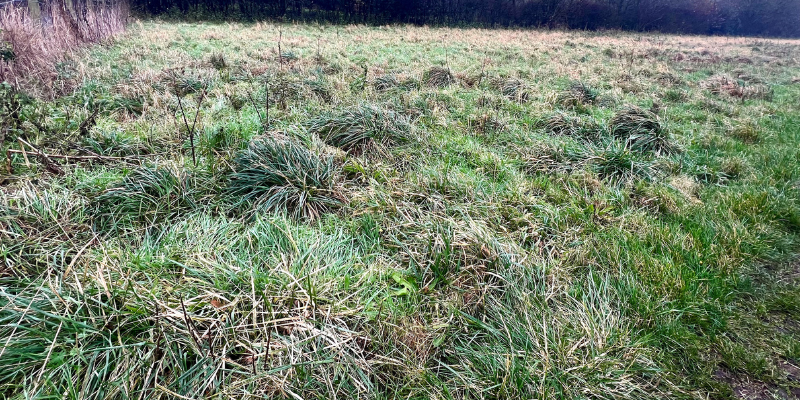
Species you might see
This grassland is created when there is little grazing or cutting and the species mix gets dominated by tussock grasses. It can be found across most geology types. This habitat is typically not wildflower rich but is important for many invertebrates and provides excellent shelter for small mammals, amphibians and reptiles.

Thanks to its geological diversity, Oxfordshire has a wide mix of grasslands from the large areas of chalk downland in the Chilterns, North Wessex Downs and Cotswolds, to the floodplain meadows in the river valleys, as well as small pockets of acid grassland, heath and fen.
Around the river valleys is clay soil – this is claggy, retains flood water, and slows drainage. These soils are typical of floodplain grazing marsh /meadows.
Around the Chilterns there is chalk downland (chalk grassland). Chalk soils are more porous and fine-grained than limestone soils and both are more free draining than clay.
There is very little acid grassland / heathland / fen in Oxfordshire, which forms on sandy soils. There are small patches around edge of Oxfordshire e.g. Lye Valley and parts of Shotover Country Park (these aren’t on the geology map because they’re too small for this scale).
Traditionally, hay meadows are typically ‘shut up’ for hay (livestock is excluded) for several weeks over much of the spring and summer, and, after cutting, the fields are aftermath grazed. After cutting, the hay is turned at least once a day to allow the crop to dry. This process typically takes about three days and allows seeds to drop onto the soil.
The cutting and removal of the arisings prevents both a dense ‘thatch’ establishing and nutrients from building up in the soil, thus benefitting the wildflowers that thrive in the poorer soils we associate with meadows.
Some grasslands are only grazed (which can be the preferred option traditionally for calcareous and acid grassland), and some are just cut for hay and some are managed with both grazing and cutting.
%2520(4).jpeg)
Tools used for cutting grasslands range from large-scale mowers to the humble scythe
Cattle-grazed meadow
• reduce or maintain lower soil nutrient levels – on fertile sites, competitive grasses dominate and smother wildflowers.
• prevent succession to scrub and woodland habitats – if left unmanaged for several years and seedlings or suckers’ growth is left unchecked, a grassland will start to develop into scrub habitat
• maintain or enhance structure – some grassland habitats benefit from having a mix of longer and shorter areas for different invertebrates, and should be managed as such
• maintain or enhance floristic diversity – a wider range of flowers and grasses will appeal to a broader range of species (to a point)
Most communities will only be able to cut grassland areas, however there will be some exceptions...
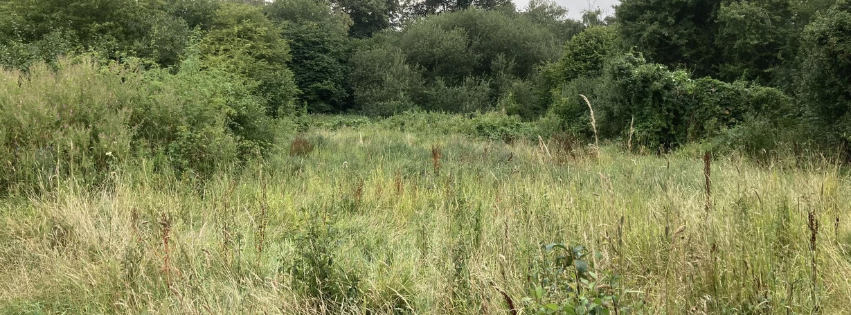
Meadow at St Mary's Fields Kidlington before being cut by volunteers
Grasslands with high nutrient content
Often these grasslands need more management to prevent them turning to scrub / woodland. Scrub will usually have plants which have a competitive advantage such as coarse grasses and species which are considered as ‘weeds’, such as creeping thistle, bramble and nettle. Scrub management is usually necessary on calcareous grassland to prevent it taking over, although pockets of scrubland are a key component for calcareous landscapes and bring all the wildlife benefits of mosaic habitats.
- What conditions do you have already? – This will determine the management needed so find out find out what’s already there i.e. the type of soil, species mix, seed bed, neighbouring habitats, and even the water content of the site.
- Consider the practical aspects of management - the cost, time, resources, size of plot, how hard is it to change what’s already there?
- Adaptability – there isn’t usually a magic wand approach to grassland management! Be prepared for there to be different options and methods depending on the site and what you want to achieve
- Consider how the site will be used by the community – this may also change the management approach and aims for the site
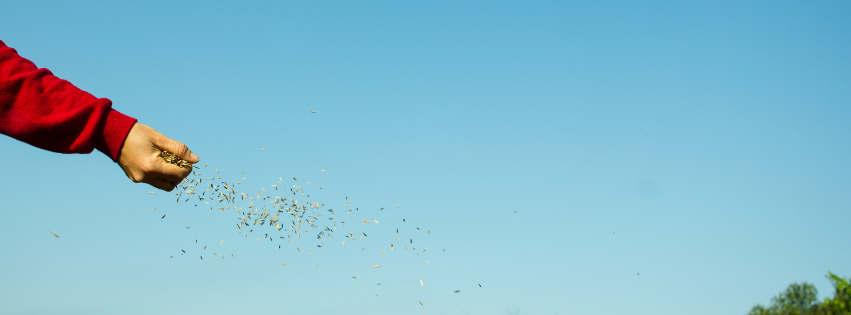
Seed sowing to increase the floral diversity of the grassland
Plug planting
Sowing wildflower seeds
Seed mixes that are suited to different soil types can be purchased from reputable suppliers, and sown to add new species. Typically this is carried out in the spring or autumn, and the ground needs to be prepared by sacrificing or rotovating before sowing to ensure the seeds reach bare soil. Green hay can also be used as a seed source.
Sourcing seeds
We always recommend sourcing seeds that are of British native provenance, even better if they have been collected from a local site with similar underlying geology, climate and other environmental conditions (especially important for sensitive or protected sites) – do check to see if there’s anything exotic in your flower mixes that may be detrimental to surrounding habitats, and ask our Community Ecology team if you’re not sure what’s best to plant where.
Some British-based seed suppliers include:
· Charles Flower
· Cotswold Grass seeds
· Emorsgate Seeds
Plug planting
Plants grown in pots or plugs can be transplanted into a meadow - this method is good for adding wildflowers which are hard to germinate. Bear in mind that not all grassland is suitable for plug planting -it should only be used as a supplementary method of sward enhancement. Plug planting is usually more expensive and time consuming than other methods.
Oversowing yellow rattle
Yellow rattle is a native annual wildflower, which parasitises and reduces the vigour and biomass of dominant grasses and legumes and allows a wider range of wildflowers to flourish. Although not suitable for all sites (such as very fertile areas),with the right management it can improve grassland diversity in the longer term.
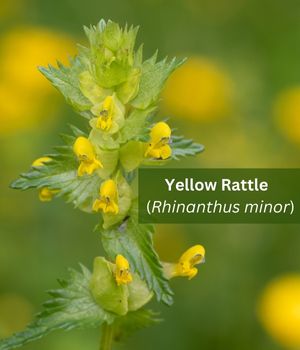
%2520(5).jpeg)
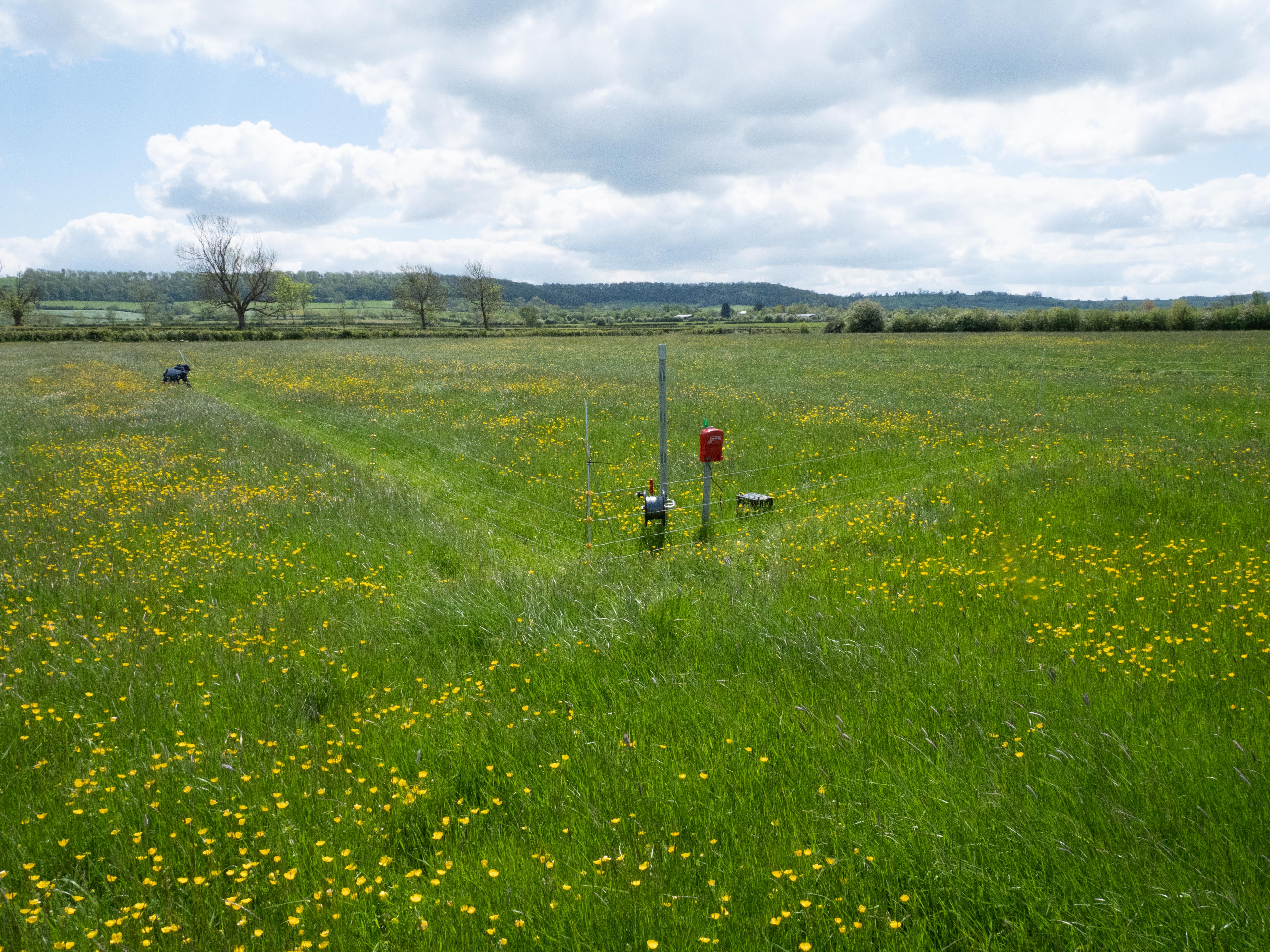
Remember that all grasslands are important and have their role in Nature Recovery. Not every space is appropriate for wildflower meadows but that doesn’t mean that other types of grassland shouldn’t be considered or appreciated.
a) If you’re just starting out – use the community guide to help you get started
b) Find out what you’ve already got
c) Use the resources section for more detail on grassland management
d) If you still need help, get in touch with us for grassland management advice – we may ask for a donation to cover our Community Ecologists time depending on what you need.
There are many meadow projects being undertaken within Oxfordshire, some are small community projects and others are larger, landscape scale initiatives. These projects are important for helping to connect and link our fragmented lowland grasslands. Included in these areas are churchyards, village greens, grass verges and even gardens managed as hay meadows.
Two of these projects include a community green space, Warwick Spinney, at the edge of Benson in South Oxfordshire, and the work undertaken within community meadows by the Nature Recovery Network, which supports nature recovery projects in Eynsham and surrounding parishes.
Both Warwick Spinney and the community meadows project at Eynsham received funding from TOE's (Trust for Oxfordshire's Environment) Local Environment Fund, which was key to the enhancement plans becoming a reality. Every year towards the end of the summer at Warwick Spinney, volunteers scythe an area of grassland enhanced in 2019 with wildflowers, including Yellow Rattle. In the photo below, you can clearly see the impact that the Yellow Rattle is making by suppressing patches of grass within the field. Nature Recovery Network volunteers planted bulbs of Snake’s-head Fritillary within some of their community meadows at Eynsham. Snake’s Head Fritillary is Oxfordshire’s county flower and this iconic spring plant of floodplain meadows is fertilised by bumblebees.
Creating and managing grasslands:
- Urban-grassland-and-verge-guidelines - How can you help local wildlife to thrive?
- How to create a meadow - Plantlife
- Hay meadow and pasture management - Save our magnificent meadows
- Example of a simple wildflower survey (2 page leaflet) - Save our magnificent meadows
- How to help wildlife thrive in urban grasslands - a list of resources put together by Oxford Biodiversity Network
Grassland species identification and advice
- Yellow rattle advice leaflet - Naturescape
- Ragwort advice poster - Butterfly Conservation
- Waxcaps in grasslands - Save our magnificent meadows
- Waxcaps in grasslands fungi guide poster - Plantlife
- Anthills in grassland restoration - a study by Tim King (University of Oxford)
Grassland Descriptions:
- How to identify different types of grassland - Save our magnificent meadows
- Lowland Meadows and Floodplain Grazing Marsh.doc
- Lowland Calcareous Grassland.doc
- Lowland Heathland and Lowland Dry Acid Grassland.doc
Scientific papers:
- 'Colonization of grassland by sown species: dispersal versus microsite limitation in responses to management' S.Coulson et al. 2021 - Journal of Applied Ecology
- 'Green hay transfer for grassland restoration: species capture and establishment' M.Wagner et al. 2020 - Society for Ecological Restoration